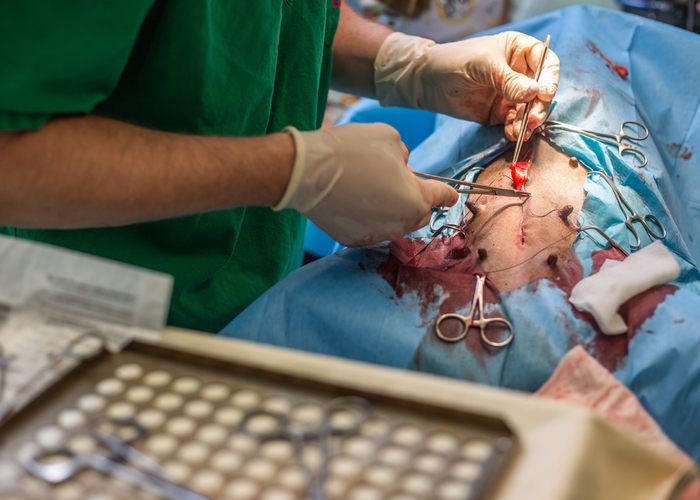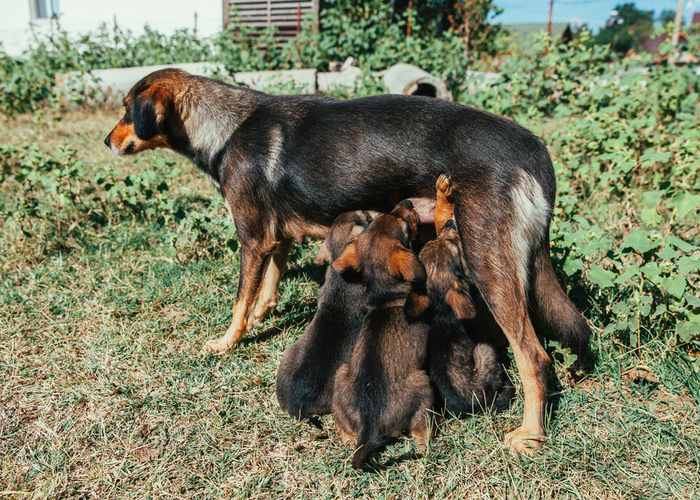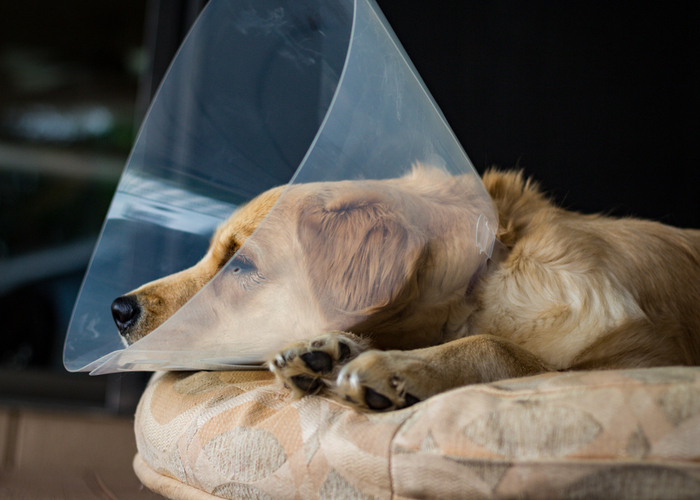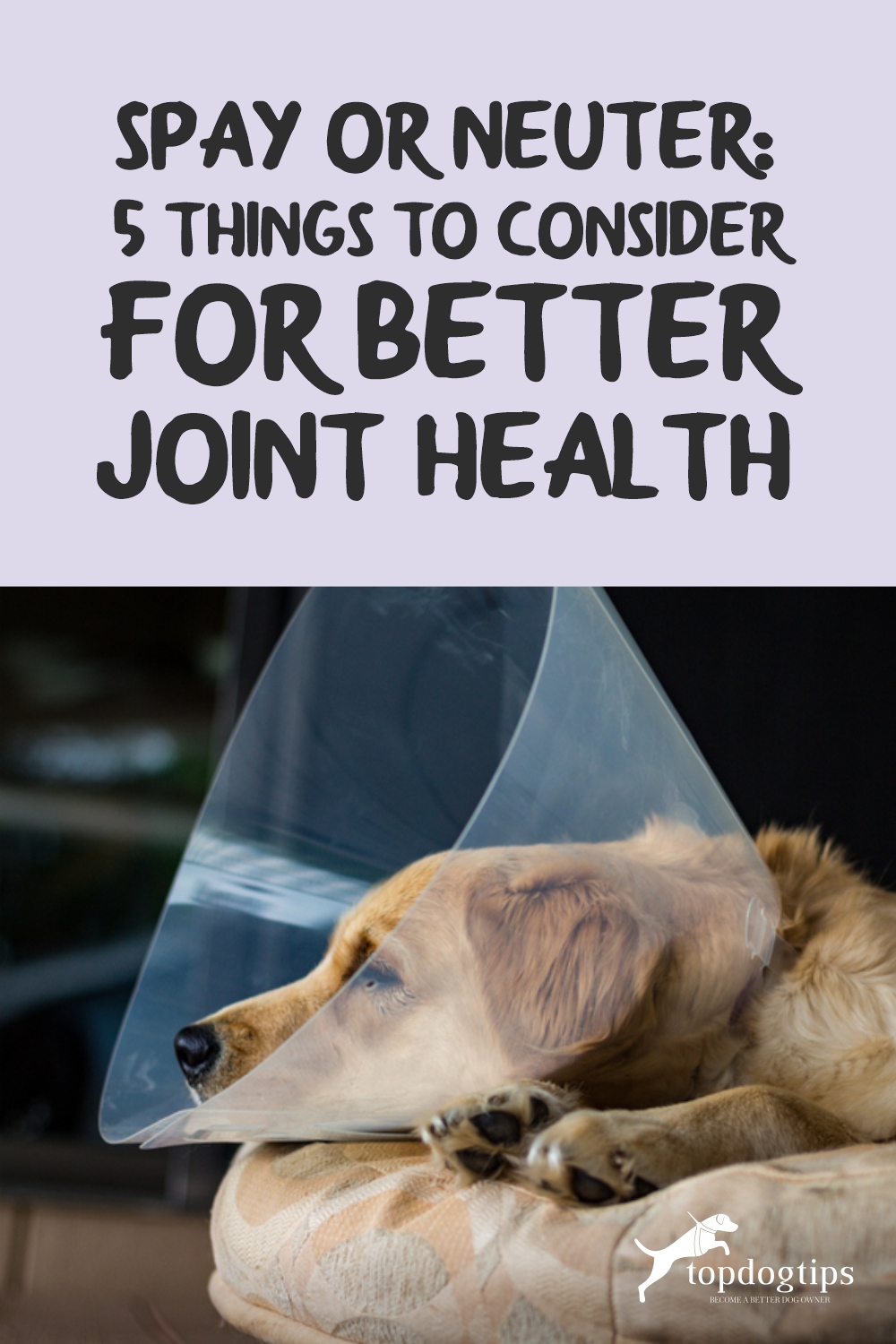If you're a first-time dog owner, one of the few things you need to ask yourself is whether you should spay neuter your dog or not.
As pet owners, we only want to provide the best health care for our dogs. However, conflicting information about spay-neuter confuses us into thinking about what's wrong or right.
The decision to spay or neuter our dog will likely affect us and the health of our dogs.
This article will discuss the possible risks of spaying and neutering and all the things you MUST consider before doing it.
Before we get into the discussion, we must understand what spaying or neutering is and the conflicting information.

Spay or Neuter: What's the difference?
Spaying and neutering is the medical (sterilization) procedure of removing the ovaries or testicles of your pets. The difference between the two is that spaying is for female dogs, whereas neutering is for male dogs.
The formal term for spaying is Ovariohysterectomy, while neutering is Castration.
Although both terms are used in veterinary medicine, the term neuter is often used to describe both processes.

Why Do We Spay or Neuter
There's no question that there has been an increasing population of dogs worldwide, especially in America.
In a research done by People for the Ethical Treatment of Animals (PETA), approximately 70 million homeless dogs and cats wander around the streets of America.
Consequently, the American Society for the Prevention of Cruelty to Animals (ASPCA) noted that 6.5 million homeless pets are being surrendered to animal shelters each year. Half of them are dogs, while the other half are cats.
To control their mass population, several dog shelters in each state require to spay or neuter their dogs before being released for adoption. They are done for pet population control and for the other benefits that come with it.
Most pet owners believe that spaying or neutering their dogs has several benefits. This includes the following:
Their Dogs Will Live Healthier and Happier
It inhibits your dogs from developing certain types of cancer, bacterial infections (i.e., pyometra), and behavioral problems.
Spay or Neuter Can Be Cost-Effective
It prevents them from having and taking care of the unwanted litter.
They Are Helping the Community:
Each year, millions of pets are getting euthanized across several animal shelters. This is due to the lack of resources to support these animals.

Spaying and Neutering: What are its risks?
Over the years, both processes became popular amongst pet owners, that it eventually became a rule of thumb.
However, several studies revealed that early spaying and neutering poses several risks to our pets. Some of these risks are:
Weight Gain
Neutering or spaying will essentially result in a loss of several hormones, which results in a slower metabolism.
Hypothyroidism
Compared to intact dogs, the number of thyroxine is significantly lower in spayed or neutered dogs.
Cancer
Vets found out that spaying or neutering can increase the risk of three types of cancer (i.e., hemangiosarcoma, lymphoma, and mast cell tumors).
Dementia
Spayed or neutered dogs will more likely suffer from dementia due to their insufficient hormones produced in their bodies.

Spay and Neuter: Its Association to Joint Disorders
As mentioned above, several studies found that spaying or neutering your pets can cause a long-term effect on their health, especially with their joints.
The main reason for this problem is the insufficient amount of estrogen and testosterone in their bodies.
These two hormones help in developing and closing the growth plates in their bones. Thus, if a dog is spayed or neutered, it will generally affect its growth progress.
As a result, this may lead to developmental orthopedic diseases (DOD), such as:
Hip Dysplasia
Hip dysplasia is a common skeletal condition, often seen in large or giant breed dogs.
In dogs with hip dysplasia, the hip joint functions do not develop properly. Instead of grinding smoothly, the ball and socket joint (spheroid joint) painfully grinds onto each other.
This results in deterioration and an eventual loss of joint function itself.
There are several reasons why a dog develops hip dysplasia. However, one of these reasons is early spaying or neutering.
In 2005, a study found that dogs suffering from hip dysplasia were neutered six months before their diagnosis. Similar findings are located in another study wherein 5% of desexed Golden Retrievers had more risk of hip dysplasia than their intact counterparts.
Cranial Cruciate Ligament (CCL) Injuries
When an Anterior Cruciate Ligament (ACL) injury is suspected, it is assumed that a ligament on the knee is torn and can no longer be used.
However, in dogs, this connective tissue is called Cranial Cruciate Ligament (CCL).
Usually, when a dog suffers from a CCL injury, you can see its symptoms through the swelling of its knees and hindlimbs.
This injury can also cause hind limb lameness and subsequent knee arthritis.
Study shows that CCL injuries are more likely prevalent in spayed or neutered dogs.
Another study found that spayed and neutered dogs of any age were twice as likely to suffer CCL rupture. Equivalent results are also found in an increased risk of CCL tears.
They presumed that the reason behind this is the lack of sex hormones produced in the dog's body. Spayed and neutered dogs don't have them, thus the occurrence of CCL injuries.
Patellar Luxation
In 2005, a study showed that spayed/neutered dogs are over three times more likely to suffer from patellar luxation.
Patellar luxation is a genetic defect where a dog's kneecap pops out from its groove. This condition often affects both knees in most cases.
Dogs who are suffering from Patellar Luxation are often seen skipping or hopping in their tracks.
More often than not, owners don't even notice these symptoms because of their subtle appearance.
Patellar luxation is more common in small to medium-sized dogs. However, large-sized dogs are affected too.
Out of 801 dogs in the study, 559 of them are found to have patellar luxation. Approximately 73% of them suffer from medial patellar luxation, while the remaining 27% suffer from lateral patellar luxation.
5 Things To Consider Before You Decide To Spay or Neuter Your Pets
Now that we have discussed the possible risks of spay-neuter to joint disorders, we will now move to the things you need to consider as a pet owner.
It is important to note that the list written below will only help you decide whether to spay-neuter your dog or not.
These things can be helpful for you not to rush into neutering them. Some dogs might have different reactions depending on the characteristics they have.
Seeking a veterinary professional's help will also guide you as they know your pet's individual needs and can make a recommendation.
But, there is nothing wrong with researching on your own. It is still your responsibility as the owner to do what's best for your pet.
1. Breed
A study conducted by the UC Davis School of Veterinary Medicine has shown that certain dog breeds are actually vulnerable to the effects of neutering.
Smaller dog breeds such as Chihuahua, Shih Tzu, and Pomeranians are not at risk of developing a joint disorder. However, large dog breeds like Golden Retrievers and German Shepherd are more at risk of three different common complications.
Accordingly, mixed dog breeds are more prone to joint disorders compared to purebreds. The reason behind this is their unpredictable growth.
Their genes can either stop or stimulate their reaction to spaying or neutering, depending on which gene is more dominant.
2. Age
Traditionally, the age for neutering among pet owners is before six months of age.
However, a guideline from AAHA Canine Life Stage Guidelines in 2019 found that your dog's age is essential when deciding the best time to spay or neuter them.
This guideline suggested that small-sized dog breeds must be neutered after six months of age, while large-sized dog breeds should be spayed around 9 to 12 months of age.
Take note that the guidelines are only estimated based on the majority of the dog population. Some dogs might have to be 2 to 8 years old to reduce the risks.
3. Gender
The percentage of joint risk with neutered dogs also varies depending on their gender.
Male dogs are more likely to develop joint disorders than female dogs, specifically Cranial Cruciate Ligament (CCL).
In one study, male Golden Retrievers are more prone to Hip Dysplasia, while male Labrador Retrievers are to Elbow Dysplasia.
4. Size & Weight
When neutered, large dogs weighing 20kg above have higher risks of developing a joint disorder than smaller dogs weighing 20kg below.
It is 28% riskier to neuter a large dog. At the same time, there is only a 5-12% risk with a standard-sized dog.
5. Choose An Alternatives To Spay or Neuter
Surgical Treatments
Vasectomy
Vasectomy is a surgical procedure wherein the vas deferens are cut, tied, and sealed.
Vas deferens is the tube that carries the sperm from the dog's testicle.
Once a vasectomy procedure is made, your male dog will no longer fertilize your female dog.
The male dog will still produce testosterone through their testicles. However, the removal of the said part won't inseminate the female dog anymore.
The advantage of this procedure is that it will ensure the balance of hormones in the male dog. Thereby producing a healthier growth development in both male and female dogs.
Tubal Ligation
Tubal Ligation is the process of tying or cutting the fallopian tube.
This process prevents the transfer of eggs from the ovaries to the uterus, resulting in infertility.
Unlike spaying, dogs that underwent this procedure will get to keep their reproductive organs. They will also still experience heat cycles and produce enough stable hormones.
Non-surgical Treatments
There are products on the market that you can use to neuter your dogs.
These products prevent the production of sperm, which causes infertility in your male dogs. Fortunately, this will not affect the production of their hormones.
Responsible Ownership
Let's be honest; some of us spay or neuter our dogs for lesser responsibilities.
Yes, spaying and neutering can prevent us from having unwanted litters or aggression problems. It can also help reduce the root of some health issues too.
Whether you spay or neuter your dog, you should spend most of your time training them to avoid having behavioral issues.
If they're in heat, it is better to keep them isolated and away from other dogs that they can smell nearby.

Conclusion To Spay or Neuter And Your Dogs Joint Health
Over the years, countless research has been conducted to study the pros and cons of spay-neuter.
Some pet owners believe that there is more of a benefit to it than its disadvantages. More and more vets believe that it is more beneficial to delay when spaying or neutering.
On the other hand, spaying or neutering your dogs must be based on an individual basis, not because it's a trend among pet owners. You need to consider if it's really what you want or what your dog needs.
Be proactive and do your own research.
Thus, you must only trust reliable and scientifically backed sources.
However, if you wish not to spay or neuter your dogs, alternative options are always available for you.
Several people might have a different view of your decision but note that there are pros and cons in every procedure you wish to decide on.
Bear in mind that it doesn't make you the wrong person whether you spay neuter your dogs or not. Looking after your pets is hard, and most people still have a hard time doing it.
These decisions are complex, but in the end, you only want what is best for your pet, and that is admirable.
READ NEXT: Science on Pros and Cons of Neutering or Spaying Your Dog














